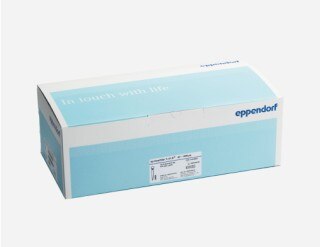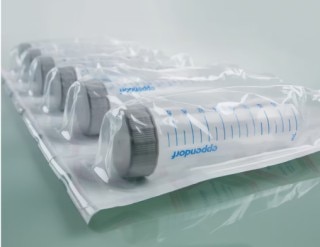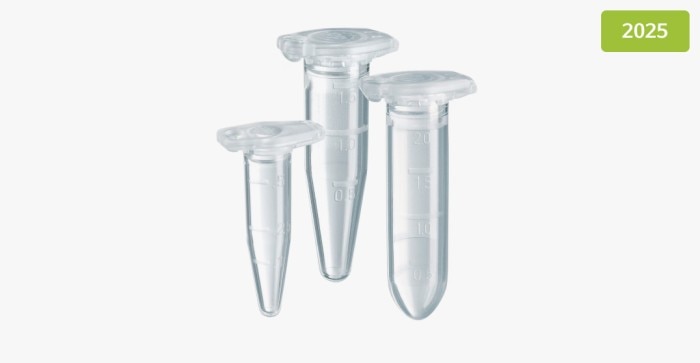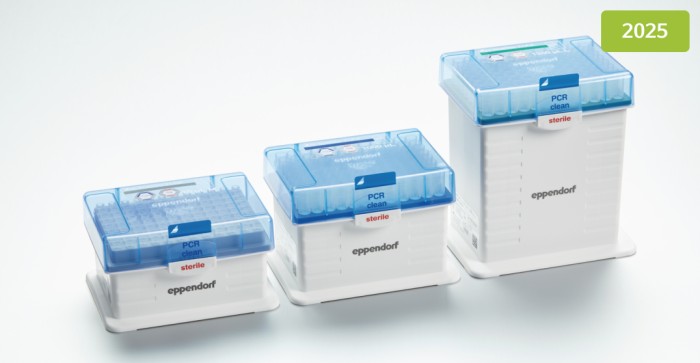メニュー
JP | JPY
-
-
-
- Challenges and Chances: A Review of the 1st Stem Cell Community Day
- Summertime, and the Livin’ Is Easy…
- Follow-on-Biologics – More than Simple Generics
- Bacteria Versus Body Cells: A 1:1 Tie
- Behind the Crime Scene: How Biological Traces Can Help to Convict Offenders
- Every 3 Seconds Someone in the World Is Affected by Alzheimer's
- HIV – It’s Still Not Under Control…
- How Many Will Be Convicted This Time?
- Malaria – the Battle is Not Lost
- Physicians on Standby: The Annual Flu Season Can Be Serious
- At the Forefront in Fighting Cancer
- Molecular Motors: Think Small and yet Smaller Again…
- Liquid Biopsy: Novel Methods May Ease Cancer Detection and Therapy
- They Are Invisible, Sneaky and Disgusting – But Today It’s Their Special Day!
- How Many Cells Are in Your Body? Probably More Than You Think!
- What You Need to Know about Antibiotic Resistance – Findings, Facts and Good Intentions
- Why Do Old Men Have Big Ears?
- The Condemned Live Longer: A Potential Paradigm Shift in Genetics
- From Research to Commerce
- Chronobiology – How the Cold Seasons Influence Our Biorhythms
- Taskforce Microbots: Targeted Treatment from Inside the Body
- Eyes on Cancer Therapy
-
-
-
-
-
- Challenges and Chances: A Review of the 1st Stem Cell Community Day
- Summertime, and the Livin’ Is Easy…
- Follow-on-Biologics – More than Simple Generics
- Bacteria Versus Body Cells: A 1:1 Tie
- Behind the Crime Scene: How Biological Traces Can Help to Convict Offenders
- Every 3 Seconds Someone in the World Is Affected by Alzheimer's
- HIV – It’s Still Not Under Control…
- How Many Will Be Convicted This Time?
- Malaria – the Battle is Not Lost
- Physicians on Standby: The Annual Flu Season Can Be Serious
- At the Forefront in Fighting Cancer
- Molecular Motors: Think Small and yet Smaller Again…
- Liquid Biopsy: Novel Methods May Ease Cancer Detection and Therapy
- They Are Invisible, Sneaky and Disgusting – But Today It’s Their Special Day!
- How Many Cells Are in Your Body? Probably More Than You Think!
- What You Need to Know about Antibiotic Resistance – Findings, Facts and Good Intentions
- Why Do Old Men Have Big Ears?
- The Condemned Live Longer: A Potential Paradigm Shift in Genetics
- From Research to Commerce
- Chronobiology – How the Cold Seasons Influence Our Biorhythms
- Taskforce Microbots: Targeted Treatment from Inside the Body
- Eyes on Cancer Therapy
-
-
JP | JPY
Sorry, we couldn't find anything on our website containing your search term.
Packaging & Consumable Resources
もっと読む
表示を減らす
Circular concepts for us are regenerative systems, in which resource use, waste production, and emissions are minimized by slowing, reducing, and closing natural resource cycles - this can be achieved through dematerialization, the use of more sustainable raw materials, and a Design for Reuse and Recycling. In our understanding, Circular concepts also include a maximum servicability and durability of products as well as prevention of potential negative environmental and social impacts.
"We have set specific targets and backed them up with clear KPIs and measures, which we will monitor regularly at Eppendorf starting in 2023. This ensures that there are defined persons responsible for achieving the
"We have set specific targets and backed them up with clear KPIs and measures, which we will monitor regularly at Eppendorf starting in 2023. This ensures that there are defined persons responsible for achieving the
targets and that the progress of defined measures is transparently trackable" – Samira Schroeder, Manager Product Sustainability.
As part of the Eppendorf strategy, we have set ourselves a number of goals for the protection of natural resources and the achievement of SDG 12. Particularly relevant topics for us are the responsible use of our consumables and packaging, for which we have defined concrete targets
and measures.
As part of the Eppendorf strategy, we have set ourselves a number of goals for the protection of natural resources and the achievement of SDG 12. Particularly relevant topics for us are the responsible use of our consumables and packaging, for which we have defined concrete targets
and measures.
Packaging
Consumables

Reduce
Replace
Rethink
Generally, Eppendorf aims to keep the reduction target for CO2 emissions in mind when selecting suppliers and materials in order to
minimize conflicting goals in other areas. In addition to a maximum possible reduction in packaging sizes and material quantities,
air spaces in outer packaging should also always be below 30% by 2028. We also see great potential in transport and logistics
processes. In the area of internal logistics, we therefore want to significantly reduce waste volumes by using more shuttle packaging,
loading pallets more efficiently, and encouraging batch-conforming ordering behavior.
minimize conflicting goals in other areas. In addition to a maximum possible reduction in packaging sizes and material quantities,
air spaces in outer packaging should also always be below 30% by 2028. We also see great potential in transport and logistics
processes. In the area of internal logistics, we therefore want to significantly reduce waste volumes by using more shuttle packaging,
loading pallets more efficiently, and encouraging batch-conforming ordering behavior.
Eppendorf will continue to require materials such as plastic films and bags as well as cardboard and similar for safe product transport. However, in addition to maximizing the reduction of material quantities, Eppendorf has set itself the goal of using recycled and renewable secondary materials wherever possible. For example, fossil-based primary plastics will be replaced by at least 35% by 2028. And all cardboard packaging for Consumables and smaller to medium-sized instruments will be made of 100% recycled
fiber or other more sustainable fibers to be completely deforestation-free by 2028.
fiber or other more sustainable fibers to be completely deforestation-free by 2028.
Our goal, after all, is to design recyclable materials used in packaging components in such a way that they represent high-quality
secondary raw materials for the technical cycle. While reuse and recycling will be relatively easy to implement for most paper and plastic packaging, we encounter serious challenges, especially for films and bags of single-use consumables, where protection, sterility and product integrity must be ensured. Currently, we often must rely on composite materials for this purpose, which can subsequently only be sent for thermal recycling. But besides that, we see great reuse potentials within our internal logistic processes, supporting significant reduction of waste volumes.
secondary raw materials for the technical cycle. While reuse and recycling will be relatively easy to implement for most paper and plastic packaging, we encounter serious challenges, especially for films and bags of single-use consumables, where protection, sterility and product integrity must be ensured. Currently, we often must rely on composite materials for this purpose, which can subsequently only be sent for thermal recycling. But besides that, we see great reuse potentials within our internal logistic processes, supporting significant reduction of waste volumes.
Discover initiatives for Reduce | Replace | Rethink packaging

REPLACE – Paper & Cardboard Packaging: Deforestation-free Paper

REPLACE – Blister trays of epT.I.P.S.® Motion Reloads from 60% recycled plastic

REPLACE – Plastic Packaging & PE-foam: Fossil primary plastics (partly) replaced by recycled plastic

REDUCE – Conical Tubes 15/50 mL: Smaller Packaging

REDUCE – Remodeling of ordering/ delivery processes for large customers (GSC)

REDUCE – PCR films & foils

REDUCE – Responsible supplier choice

REDUCE – Responsible material choice

REDUCE – Material/waste flow analysis & efficiency increase (PO)

REDUCE – Packaging waste reduction between sites & central hub

REDUCE – Reduction of pallet space per product

REDUCE – Size reduction of plastic bags

RETHINK – Reuse of Tip Boxes

RETHINK – Reuse & Recycle racks from racked tubes

RETHINK – Mechanical Recycling Program

RETHINK – New packaging Eppendorf Safe-Lock Tubes (1.5 mL)

RETHINK – New packaging ep Dualfilter T.I.P.S.® BioBased Reloads (20 - 200 μL)

RETHINK – Paper packaging 100% designed for recycling

RETHINK – Plastic packaging 100% designed for recycling

RETHINK – Packaging reuse for service parts

RETHINK – Reuse of pallets, pallet wrappings and straps

Reduce
Replace
Rethink
In principle, reduction targets should be compatible with our climate protection goals. What does that mean in practice? For example, that aspects such as the CO2 backpack are taken into account when selecting materials. Regarding material efficiency in consumables, optimization has been conducted for some products. However, there is still potential in the upstream production processes. Thus, we intend to review material flows in production with the aim of further reducing waste volumes and passing on valuable waste materials that are no longer needed to neighboring industries for the manufacture of other products. We also want to
increasingly consider local suppliers for services. making use of environmentally friendly forms of transportation
increasingly consider local suppliers for services. making use of environmentally friendly forms of transportation
We see great innovation potential for consumables with sample contact in the use of renewable instead of fossil primary raw
materials. Eppendorf has set itself the goal of offering at least one more sustainable product in each consumable's product family by 2028, consisting of biobased materials derived from industrial waste. This principle is already successfully implemented in Eppendorf Tubes® BioBased, epT.I.P.S.® BioBased, and Eppendorf twin.tec® PCR Plates Biobased without any qualitative differences compared to our own fossil-based consumables. For consumables without sample contact, Eppendorf goes one step further and intends to replace at least 30% of the fossil-based primary raw materials by 2028 compared to 2022.
materials. Eppendorf has set itself the goal of offering at least one more sustainable product in each consumable's product family by 2028, consisting of biobased materials derived from industrial waste. This principle is already successfully implemented in Eppendorf Tubes® BioBased, epT.I.P.S.® BioBased, and Eppendorf twin.tec® PCR Plates Biobased without any qualitative differences compared to our own fossil-based consumables. For consumables without sample contact, Eppendorf goes one step further and intends to replace at least 30% of the fossil-based primary raw materials by 2028 compared to 2022.
Recycling and reuse of consumables with sample contact is still unthinkable today, at least on a larger scale. For safety reasons, most
of them are still incinerated. However, Eppendorf has set itself certain goals with regard to consumables that do not come into
contact with samples. By 2028, for example, they are to be designed in such a way that 100% of them can flow into public recycling
streams as high-quality secondary raw materials. In addition, we want to introduce take-back and recycling systems for tip racks in
five countries by 2025.
of them are still incinerated. However, Eppendorf has set itself certain goals with regard to consumables that do not come into
contact with samples. By 2028, for example, they are to be designed in such a way that 100% of them can flow into public recycling
streams as high-quality secondary raw materials. In addition, we want to introduce take-back and recycling systems for tip racks in
five countries by 2025.
Discover initiatives for Reduce | Replace | Rethink consumables

REDUCE – epT.I.P.S.® Reloads: Less packaging

REDUCE – epT.I.P.S.® Reloads: Less packaging

REDUCE – Eppendorf Tubes® 5.0 mL

REDUCE – Eppendorf Conical Tubes 25 mL

REDUCE – 384-well system: Miniaturisation

REDUCE – Sterile Reloads Less plastic

REPLACE – Eppendorf Tubes® BioBased

REPLACE – Eppendorf twin.tec® PCR Plates Biobased

REPLACE – epT.I.P.S.® BioBased

REPLACE – Eppendorf Deepwell Plates Biobased

REPLACE – Eppendorf Safe-Lock® Tubes Biobased

REPLACE – Recycled consumables without sample contact

RETHINK – Single-use Tube Racks

RETHINK – Used Tip Racks





